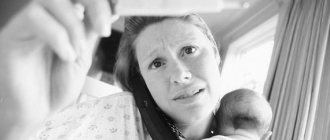Friedrich Salomon Perls, better known as Fritz Perls, was a German physician, psychiatrist and psychoanalyst. He was the father of Gestalt Therapy. He was a controversial and fascinating man who spent his entire life between intellectual circles, theoretical discussions and world travel.
Perls was born in Berlin on July 8, 1893, in the Jewish ghetto. He had two older sisters, Elsa and Greta. His father, Nathan, was a wine salesman who was often away. His mother, Amalia, came from a middle class family. She left him with a deep interest in art that remained with Perls throughout his life.
The goal of therapy is to make sure the patient recognizes when he is experiencing himself, when he is seeing his world, and when he is using his intellect."
Fritz Perls
During the interview, Greta described her brother's childhood as "wild". He was a difficult child, but a good student. He received his secondary education at the Mommsen Gymnasium in Berlin. It was an extremely strict school where anti-Semitism was widespread. Perls was expelled when he was 13 years old. As punishment, his father forced him to work as an apprentice in a pastry shop.
Perls's relationship with his father was always very bad. In his diaries, he defined his father as a hypocritical man with double moral standards. He believed that his father hated his mother and cheated on her with other women. The disgust that Perls felt for his father was so strong that he did not even go to his funeral.
Fritz Perls and his encounter with philosophy and psychoanalysis
Fritz Perls made a personal decision to return to the humanist-oriented school, the Askaničes Gymnasium. It was then that he met Max Reinhardt, a theater director who developed his love for art. This continued until his death.
Important! Later he began to study medicine. Soon after World War I began, Perls volunteered for the Red Cross. But he spoke about this only years later in his biography, “The Agony of Life in the Trenches: The Horror of Life and the Horror of Death.”
In 1920, Fritz Perls received his medical license from the Friedrich Wilhelm University of Berlin. He later specialized in neuropsychiatry. He then met the philosopher Friedlander, whose influence was crucial to Perls's work. In 1923 he decided to go to New York. But he returned disappointed after his license was not approved because he did not speak English. This period led him to begin psychoanalysis with Karen Horney. This changed his life.
DOSSIER
Frederick Salomon Perls
At the age of 20 he began to study medicine,
which indirectly led the young man to become acquainted with psychoanalysis, which, in turn, determined the direction of Perls’s further work (after receiving his Doctor of Medicine degree in 1921, he took up psychiatry).
At the age of 32 he began
a long and unsuccessful journey through the couches of various psychoanalysts, and also met the holistic specialist Kurt Goldstein, which was the first step towards disappointment in psychoanalysis and towards Gestalt psychology.
At 37 he married his unloved wife
a woman with whom they were connected by a common interest and the ability not to interfere with each other.
At 40 with the advent of Hitler
to power, he fled to South Africa, where he acquired a lot of interesting practical experience as a military psychiatrist.
At 58 he published his main work
life (the book “Gestalt Therapy”) and created the New York Institute of Gestalt Therapy in his own apartment.
By the seventh decade,
Having already achieved fame and financial success thanks to the dissemination of his “teachings,” he began to allow himself barbs at the pillars of psychoanalysis in speeches to students at the Esalen Institute in Big Sur.
He died at the age of 76
– March 14, 1970.
Fritz Perls's career change
Perls was fascinated by psychoanalysis. He decided he wanted to become an analyst. But he had to move to Frankfurt to take up a position as an assistant to a psychiatrist named Kurt Goldstein, who was working on the theory of Gestalt psychology. There he met Laura Possner, a student who two years later became his wife. Perls was 36 years old, and Laura was only 24.
A year later he began working as an analyst in Vienna. In 1928 he became a full-time physician in Berlin. Meanwhile, in 1930, Perls conducted psychoanalysis with Eugen Harnick and then with Wilheim Reich. The second man was one of Freud's students. But he moved away from Freud's theories. Many of the theories that Perls developed later were inspired by Reich.
The Birth of Gestalt Therapy
After Hitler came to power, Fritz Perls fled to Holland and could not obtain a work permit. Ernest Jones, after going through some difficult times with his wife and newborn daughter, helped him get a job teaching psychoanalysis in Johannesburg, South Africa. Together with his wife Laura, he founded the South African Psychoanalytic Association. In 1936 he was invited to a conference in Prague, and the ideas he spoke about caused a stir. He found himself in a bad place again and moved away from traditional psychoanalysis.
With the help of his wife, Perls began to formulate his ideas. In 1942, he moved to New York and published his first book: Ego, Hunger and Aggression: Freud's Theory Revisited. Four years later he started "Group 7" with other intellectuals. In 1951, he published what some people see in the Bible about this new approach: Gestalt Therapy: Excitement and Growth of the Human Personality.
The book was born thanks to the help of the poet Paul Goodman, who gave it a literary character. This is a complex book that draws on ideas from Gestalt psychology, psychoanalysis, phenomenology, existentialism, and American pragmatism. Perls later also added some Buddhist concepts after his trip to Japan.
The fate of the theory of Gestalt therapy was difficult. In 1956, Perls divorced Laura, and they both took the theory in different directions. While Laura and Paul Goodman remained completely faithful to the original principles, Perls moved away from this point of view. He brought in Zen principles and even some things from Israeli kibbutzim. At the end of his life he acted more like a guru than a therapist. He died of a heart attack after a long trip.
Business concept illustration of a businessman having a therapy with psychologist
BRIEFLY ABOUT THE MAIN THINGS
Perls' memoirs bear the sonorous title "Inside and Out of the Garbage Bin." In them, he willingly and extensively discusses his philosophical views, which then resulted in a commitment to Gestalt psychology and the invention of the Gestalt therapy method. Statements about personal life are short and sharp. For example, about a family that today would be called “dysfunctional” (quarrels, fights, personality suppression), he wrote: “Mom is ambitious, loves art and hates father. The father hates the mother, loves women, and also poses as a Master Mason. Both are friendly in public.”*
These words show the environment in which the child grew up. It was probably during his childhood that his complex, rebellious character with a pronounced desire for self-disclosure developed. Fritz would later indirectly confirm this by formulating the idea that the unique human “I” is composed simultaneously of all social, cultural, physiological and moral factors. That a person and his environment are a single system, and psychotherapy is impossible without analyzing the contact between them.
He comments similarly on his marriage: “Marriage. Then two children, four grandchildren. Not the most exemplary husband. My wife is passionate about expressive movement – Gindler.” And further: “They lived, in essence, parallel to each other, with relatively few ups and downs of feelings of strong enmity and love...” Even the story of the engagement itself is noteworthy: “Laura insisted on getting married. I knew that I was not the type to become a husband. I wasn't crazy in love with her, but we had a lot of common interests and we often had a good time. When I confronted Harnik about this, he responded with a typical psychoanalytic ploy: “You are not allowed to make important decisions during treatment. If you get married, I will stop the analysis.” Being too cowardly to end the couch life on my own initiative, I transferred responsibility to him and traded psychoanalysis for marriage.”
Perhaps, after these revelations, it would make sense to speculate about whether there was simple human happiness in the life of Fritz Perls. Maybe someone would consider this a reason to suspect him of misanthropy or a banal inability to build relationships with other people. This can also be evidenced by Perls’s second failure on the personal front: Marty Frome, who was thirty years younger than him, immediately left Fritz for another man after his marriage proposal.
Be that as it may (and all this, of course, is just speculation), all these relationships gave us a great idea that changed the psychological world - the idea of \u200b\u200bthe self-worth and greatness of an individual individual, which another individual cannot and should not judge by his own standards.
“I do my thing and you do yours. I am not in this world to meet your expectations, and you are not in this world to meet my expectations. You are you, and I am me. If we happen to find each other, that's great. If not, then nothing can be done.”
Another failure in the relationship can be considered Perls’s meeting with his idol, Sigmund Freud. According to legend, in 1936 they met at the international psychoanalytic congress in Vienna, where Fritz flew himself piloting his personal plane. But the creator of psychoanalysis was able to devote only a few minutes to the already middle-aged Fritz, during which it was impossible to discuss all the ideas of Freudianism, which was what the future founder of Gestalt therapy was counting on. This is how he himself describes the meeting: ““I came from South Africa to make a report and see you.” - “Well, when are you leaving?” - he asked. I don't remember the rest of the four-minute conversation. I was shocked and disappointed."
Indeed, one might decide that he was simply offended by Freud, whom after this meeting he began to bring down from his pedestal. Meanwhile, people in the know assure that this is not a matter of personal grievances at all.
“When we studied the biography and works of Fritz Perls, we were young psychologists just over thirty
,” recalls psychotherapist and Gestalt analyst Daniil Khlomov.
“ At that time it was difficult for us to understand many facts from Perls’s life. Now we understand that he wrote his first significant book when he was already 49 years old, that it was built on 25 years of experience in psychoanalytic work, ups and downs, rollbacks and resumption of work in the chosen direction. Only over the years and experience did it become clear to us that his criticism of Freud was not an insult, not a rebellion of the young “Oedipus” against the power of his father. This criticism is a typical example of the development of psychological science of that time, one might say the leading trend: after all, all the main figures of post-war psychoanalysis relied on criticism of classical Freudianism.”
Gestalt therapy approach
Gestalt therapy can be said to be a trend that focuses more on how patients perceive their reality rather than what they experience. It's not about what happens to a person. It's about how a person sees these things. It emphasizes processes rather than content. This focus is part of humanistic psychology and puts forward three basic principles:
California
In April 1964, Perls stayed in Esalen in the south of San Francisco, a place that became famous and was later nicknamed the “Mecca of humanistic psychology.” Two young Americans, inspired by psychology and Orientalism, revived the Center for the Development of Human Potential there and invited famous lecturers there to conduct seminars and internships. Fritz organized several Gestalt sessions there and conducted many demonstrations. But his time had not yet come: most of his courses attracted no more than 4-5 participants! And then the great planetary movement of 1968, started by Californian students under the slogan of “fighting satiety,” challenged the American “way of life.” Why accumulate wealth if it doesn't make you happy? The pursuit of “to have” and “to have even more” was replaced by the search for “to be” and “to be better”: people were looking for quality of life. They shed their suits and ties for faded jeans; left large enterprises and moved to the Cottage industry (telework from home in a small team using computers and telecommunications). Here the slogans “Small is beautiful” and “Paradise now” reign supreme, while in Paris the walls were covered with posters “Posting of posters is prohibited”; “Dreams of Power”, “It is Forbidden to Prohibit”, “Poetry on the Street”...Life magazine outlined Perls’s ideas, his attempts to find authentic life in direct and artless human-to-human contact. His seminars suddenly “exploded”: every day they were attended by more than 300 people who argued for the right to “work” with him for a few minutes. He introduced new spectacular techniques of public dialogue with himself: the “client” climbs onto the stage, sits on the “hot chair”, “hot seat” (literally: “burning throne”, but in argot this expression also means the electric chair for those sentenced to death !), facing an empty chair and asks his loved ones - or rather the internal image that he has formed - “Mom, why did you die so early? You abandoned me, although I still needed you; I missed you terribly...” Perls pays much more attention to the tone of voice, posture, direction of gaze, and the process of an imaginary conversation than to its content. By talking to oneself or interacting with Perls, the client becomes aware of the entire fabric of his personality, which remained in the fog, hidden behind introjects (what I was taught to think, but which is not always consistent with my deepest feelings) or vulgarized and “perverted” . For example: "I cannot want to be a poor sick person" or "a man should not cry", etc.). These seminars were recorded on video, and one of them was published in 1969 under the title "Gestalt Therapy Verbatim" (translated into French under the title: “Dreams and Being in Gestalt Therapy”). This contributed to the recognition of the new method and made it famous. Many recognized experts from all over went to see the brilliant Perls at work. They conducted experimental sessions with him and finally became inspired by some of his ideas: Gregory Bateson (founder of the Palo Alto school), Alexander Loewen (founder of bioenergetic analysis), Eric Berne (creator of transactional analysis, or TA), John Lilly (inventor of the "box" sensory isolation"), Stanislav Grof (experimented with LSD, creator of "holotropic breathing" and founder of transpersonal psychotherapy), John Grinder and Richard Bandler (founders of neurolinguistic programming, or NLP) and many others.
Three principles of Gestalt therapy
- Emphasis on here and now. According to Gestalt therapy, people do not perceive the past, present and future as separate realities. These three time periods are part of one unit that exists only in the present. Both the past and the future are only projections of this present. So he tries to work on the here and now. And this is how he tries to help people find a way to solve problems and achieve a more self-fulfilling life.
- Awareness. To achieve a better level of well-being, you must take a closer look at yourself. This is the basis for creating new ways of creating experience in the here and now. This is a path that allows you to refocus your view on things that are not actually happening. And it shows that you need to find a new way to look at your personal experience.
- To take the responsibility. The process of awareness should lead you to the point where you can take responsibility for the consequences of your actions. If you accept your mistakes and develop an understanding of the risks associated with a certain action, you will achieve independence. This is how you can give direction to your existence. The one who has more freedom and meaning.
Gestalt Therapy by Fritz Perls offers a process of intervention to help someone change their view of reality. This should also help them reorient towards a more independent life. They must be able to focus on their own potential. People use it in many different areas: clinical, social and even work settings.
If you find an error, please select a piece of text and press Ctrl+Enter.











